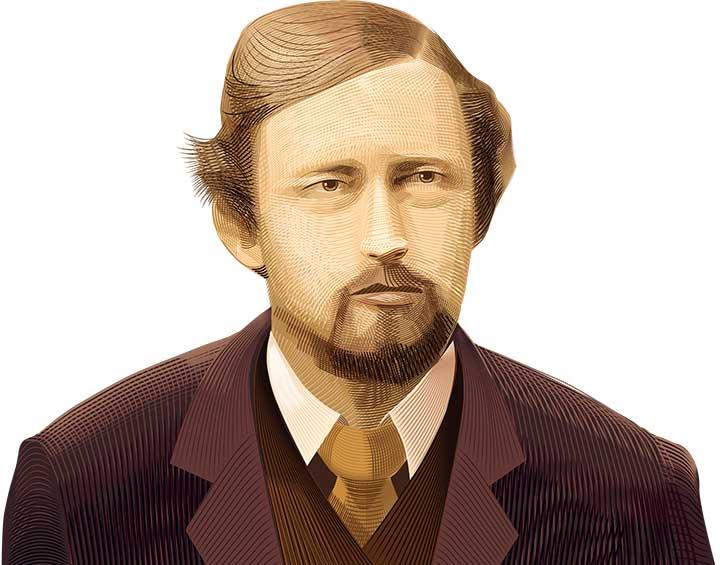In 1893, Charles Howard Hinton became an instructor in mathematics at Princeton. His preferred format as a mathematician was not the paper or the blackboard talk, but science fiction, which did not yet exist as a genre. He wrote science fiction anyway, publishing whimsical inquiries into the strange geometries of higher mathematics under the heading “scientific romances.”
The fourth dimension — its unfamiliar properties and the uncanny beings that might inhabit it — was his signature topic. Should higher dimensions exist, he suggested, then either we exist in the fourth dimension unawares, perhaps in the form of undiscovered particles; or we exist in three dimensions, and so live in peril that a higher thinker will unthink us: “If we are in three dimensions only, while there are really four dimensions, then we must be relatively to those beings who exist in four dimensions, as lines and planes are in relation to us. That is, we must be mere abstractions.”
Hinton’s best student was not at Princeton. In the 1870s, while living in London, he had accompanied his father on visits with the mathematician Mary Boole, whose husband, George Boole, had created the Boolean algebra that pervades computing today. Hinton entertained himself on these visits by bringing wooden cubes, arranging them into shapes, and teaching the Boole children about geometrical models. Alicia Boole, the middle child, showed an unusual gift for visualizing higher dimensions; she became famous for drawing and building models of three-dimensional cross-sections of four-dimensional objects. Hinton coined the word tesseract for four-dimensional hypercubes such as those Boole modeled.
He left to posterity a cast of characters including an Unlearner who helps students to forget knowledge that has proven irksome or irrelevant.
At Princeton, where he taught until 1897, Hinton invented a baseball-pitching machine powered by gunpowder. The machine soon ceased to be used, a contemporary told The New York Sun in 1907, “on account of the fear it inspired in the batters.” (The machine had injured several people.)
No matter; the surly physics of our world never held his interest nearly as much as the speculative dimensions that mathematicians call higher space, which he populated with impossible creatures. He left to posterity a cast of characters as strange as the higher-dimensional shapes in Boole’s drawings: an invisible woman, the personification of an idea, who is wooed and hunted by men who believe in her though they cannot see her; a kingdom of people whose life force grows and decays according to the laws of thermodynamics; an Unlearner who helps students to forget knowledge that has proven irksome or irrelevant; hidden kings; sentient equations; living ethers that cradle worlds. His work inspired Aleister Crowley, H.P. Lovecraft, Jorge Luis Borges, Alan Moore, Madeleine L’Engle, and Christopher Nolan, among many others. Upon his death, the Alumni Weekly wrote: “Many of his exquisite fancies he embodied in story or parable, but his whimsical, fantastic humor was best brought out in talk, and his friends can never forget the rare charm of his conversation.”












No responses yet